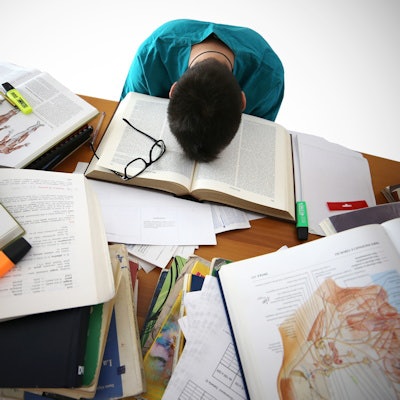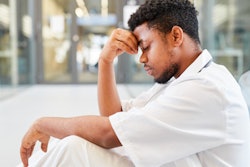
Despite increased awareness of the prevalence of physician burnout, it remains a problem -- particularly among radiology residents, a group of investigators has found.
A team led by Dr. Rebecca Le of University of Florida Health in Jacksonville published study results September 25 in Academic Radiology that highlight the need for further research.
"Trainees are not immune to burnout symptoms," Le and colleagues wrote. "With an unfortunate claim for one of the highest percentages of burnout but with few articles evaluating such associations, further assessment of radiology trainee burnout is necessary."
Studies have shown that the overall percentage of reported burnout among physicians is close to 50%, and recent research has found higher rates, ranging from 62% to 69% for emotional exhaustion across a variety of specialties, the authors wrote. Attendings are vulnerable to burnout, but so are residents, whose overall burnout rates appear to vary from 36% to 62%.
"Radiology trainees work in the same conditions as attendings," the group explained. "They also experience the burden of increased study volume and may feel pressure to provide quantity over quality ... [they] may also feel a lack of purpose or ability to change the established work culture, further exacerbating poor feelings."
Le and colleagues compared two burnout measurement tools to evaluate emotional exhaustion and depersonalization/disengagement among 770 radiology residents across the U.S.: the Maslach Burnout Inventory (MBI) and the Oldenburg Burnout Inventory (OLBI). Study participants completed questionnaires from each tool at three time points: April 2018, October 2018, and April 2019. Most of the residents were in their second year.
The group found that the two tools were comparable in their performance. The Maslach scores showed moderate burnout symptom intensity; the OBLI scores reflected somewhat higher distress. The team used different score ranges for the two different measures they assessed based on the number of questions used for each measure.
| Prevalence of burnout in radiology residents | ||
| Symptom | Mean score, Maslach | Average score, OBLI* |
| Emotional exhaustion | 21 out of 54 (moderate) | 2.38 |
| Depersonalization/disengagement | 8 out of 30 (moderate) | 2.22 |
The OBLI scores indicated that 60.9% of study participants met the threshold for exhaustion and 63% for disengagement, according to the investigators, while the MBI scores suggested a range of emotional exhaustion and depersonalization experiences caused by work of between less than once a month to a few times per month.
The authors acknowledged that their investigation was conducted before the COVID-19 pandemic and that coping with the crisis most certainly has boosted the prevalence of burnout.
"The increased use of reading or virtual conferences to promote physical distancing, intermittent staffing shortages due to possible infection, stresses from uncertain training opportunities during the pandemic, and reduction in wellness services secondary to budget cuts have all been associated with recent lower workplace morale," the group wrote.
The study findings can serve as a baseline assessment, Le and colleagues concluded, emphasizing that "further research will be necessary to evaluate the impact of the pandemic on burnout among radiologists and trainees."




















